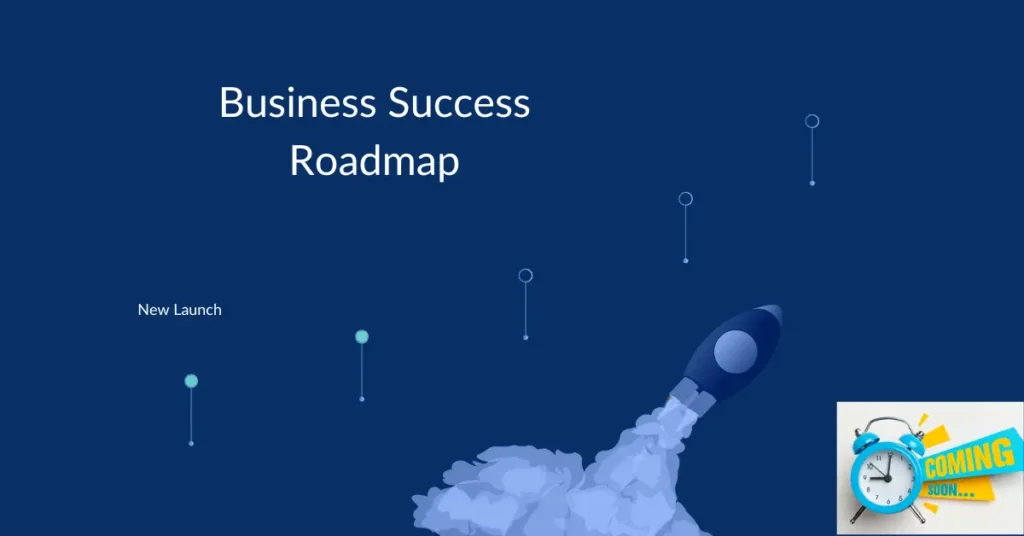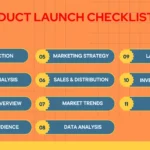The term the Importance of a Preliminary Release: Its Meaning and Advantages “soft launch” is recognized widely within the dynamic sphere of introducing new products or services, serving as a strategic method to debut a novel offering. This piece aims to demystify the soft launch and its relevance to launching endeavours for those unacquainted with the terminology. Grasping the intricacies of soft launches provides valuable insights into product development dynamics, which benefits both experienced entrepreneurs and curious consumers.
Whats Soft Launch
A soft launch represents the initial, limited dissemination of a new product or service to a select audience. It’s an intentionally planned phase within the product development timeline, setting the stage for a more public and expansive launch. Characterized by its subtle and controlled approach, the soft launch starkly contrasts the flashy and widely publicized strategies usually associated with significant product debuts.
During a soft launch, exposure to the product or service is deliberately confined to a specific group or market niche. This low-key unveiling serves several purposes, all aimed at refining and enhancing the product before a broader release.
The key objectives of a soft launch include:
- Market Exploration:
Soft launches are preliminary market entries that allow businesses to gauge a smaller segment of customer reactions and feedback. This initial exposure is a practical test that yields valuable data on user perceptions, interactions, and responses to the product.
- Gathering Customer Insights:
Obtaining feedback from the target audience is critical during a soft launch, enabling the identification of strengths and weaknesses. By focusing on the user experience, companies can pinpoint areas for improvement, fine-tune features, and implement necessary adjustments based on real-life usage.
- Identifying and Addressing Issues
Introducing the product to a smaller audience helps uncover unexpected glitches, bugs, or challenges that were not apparent during internal tests. This early problem-solving and optimization opportunity ensures a smoother user experience as the product scales.
- Discreet and Focused Strategy:
Unlike the spectacle of mainstream launches, a soft launch opts for a more discreet and targeted method. This strategy can generate authentic buzz about the product, making early users feel special.
- Strategy Refinement for Main Launch:
Insights gleaned from the soft launch phase allow businesses to fine-tune their approach. This might involve adjusting marketing strategies, enhancing features, or resolving unforeseen stumbling blocks, paving the way for a smoother, more successful main launch.
A soft launch offers a strategic preview of a product or service, letting companies swiftly adapt to market realities. This thoughtful approach lays the groundwork for a more substantial, impactful introduction when the product officially hits the market.
What is One Launch? the Importance of a Preliminary Release
“One Launch” refers to the crucial moment a product or service is presented to the general public in a comprehensive, singular event. In contrast, a soft launch is a measured and nuanced approach, while a one-time launch celebrates the culmination of meticulous development and refinement. It is when a company aims to capture widespread attention after carefully crafting its offering.
The significance and impact of a one-time launch cannot be understated. Characterized by a strategic blend of marketing campaigns, public engagements, and sometimes promotional strategies, this meticulously orchestrated event aims to make a significant and enduring impression on consumers.
Preparing for the main launch through a soft launch involves introducing the product or service to a select audience. This phase’s goals include:
- Soliciting user feedback.
- Testing the product in real-world scenarios.
- Refining the offering based on the feedback received.
Information from the soft launch is invaluable for resolving issues, enhancing user experience, and ensuring the product meets expectations.
The one launch emerges from all the preparatory work initiated during the soft launch phase. It signifies when a company is ready to showcase its goods or services to a broader audience, armed with the lessons learned from the initial release. This phase is defined by a strategic alignment of resources and marketing efforts, often involving significant investments, aiming for a substantial impact on the target market.
Immediate sales, brand development, customer engagement, and potential for long-term expansion are metrics for a single launch’s success. The goal is to leave a lasting impact on consumers by generating enduring brand loyalty and market recognition through initial buzz.
Benefits of a Soft Launch:
- User Feedback and Iteration:
Among the primary advantages of a soft launch is the opportunity to engage with a select user base and collect valuable feedback. This iterative process is crucial for understanding user preferences, identifying potential issues, and adjusting. Iterative enhancements during the soft launch phase align the final product more closely with target audience expectations, leveraging user feedback to boost overall quality and user satisfaction.
- Identifying and Resolving Issues:
A soft launch enables real-world product testing within a controlled audience, facilitating early detection of potential flaws or areas needing improvement. Early problem identification and resolution prevent negative user experiences during the broader launch. This proactive approach improves reliability and functionality and builds user trust by demonstrating a commitment to fulfilling customer needs.
- Building Buzz and Anticipation:
Despite its discrete nature, a soft launch can generate initial excitement and buzz within a specific niche. This introduction sparks curiosity and interest among potential users, setting the stage for a more impactful launch. Positive experiences and endorsements from early adopters during the soft launch can amplify product credibility, fostering a more favourable response at the main launch and creating momentum beyond the initial user base.
- Market Testing and Validation:
A soft launch provides invaluable real-world insights into a product’s performance, viability, and market acceptance. This data-driven strategy supports business assumptions about the target market, enabling strategic adjustments based on tangible evidence. Understanding initial audience reception allows businesses to refine marketing strategies, optimize product positioning, and tailor their launch approach for a more successful debut. This informed decision-making approach enhances the likelihood of a successful launch, minimizing risks associated with entering the market unprepared.
Soft launches are a strategic approach to introducing a product to a limited audience before a full-scale release. This method allows companies to test their products, gather valuable user feedback, and make necessary adjustments without the pressure of a large
Understand More About Soft Launch
What are some examples of successful soft launches?
The team behind Slack focused on creating a seamless experience for teams, initially keeping the platform in a closed beta. This allowed them to refine features and address issues before opening up to a broader audience. The buzz generated within these small circles spread through word-of-mouth, making Slack a go-to communication tool even before its official launch.
Fortnite: Testing the Waters with a Limited Audience
Fortnite’s developers adopted a soft launch strategy by offering early access to a limited number of players. This phase allowed them to test the game’s mechanics, server stability, and overall user experience. Feedback from these early users was crucial in shaping the game’s development. By the time Fortnite fully launched, it had already amassed a dedicated player base and was well-positioned for mainstream success.
Airbnb: A Quiet Entry into the Market
Airbnb’s soft launch focused on small, niche markets and unique listings. The founders initially tested their platform in their hometown and gradually expanded to other cities. This careful and deliberate approach helped Airbnb build trust with hosts and guests. By focusing on quality and reliability, they laid the foundation for what would become a global accommodation phenomenon.
Clubhouse: Exclusive Invitations and Limited Access
Clubhouse, an audio-based social media platform, generated significant buzz through its exclusive, invitation-only model. This approach controlled the platform’s growth and created a sense of exclusivity that attracted high-profile users. By carefully curating content and maintaining a high-quality user experience, Clubhouse could scale effectively while maintaining its allure.
Spotify: Music Streaming with a Subtle Debut
Spotify began with a beta launch in Sweden, allowing the company to test its streaming technology and refine its music catalogue. This limited release helped Spotify identify and fix technical issues, enhance user experience, and better understand the market’s needs. The gradual expansion into other countries and a focus on improving the app-enabled Spotify to become a dominant player in the music streaming industry.
Dropbox: Simplifying File Sharing Through Early Access
Dropbox utilized an invitation-only beta phase to introduce its cloud storage service. This strategy created a sense of exclusivity and allowed the company to gather detailed feedback on its product. Early users were instrumental in helping Dropbox refine its features, making the platform more intuitive and user-friendly. The buzz generated by this early access helped Dropbox rapidly grow its user base upon full release.
Tinder: Targeting College Campuses
Tinder’s soft launch strategy initially targeted college campuses, using student ambassadors to spread the word. This approach allowed Tinder to tap into a social and tech-savvy demographic. Tinder quickly gained popularity by focusing on a specific user base and leveraging word-of-mouth marketing, eventually expanding to a broader audience.
WhatsApp: Simple Messaging with a Gradual Approach
WhatsApp’s success story began with a slow rollout, emphasizing a clean and straightforward user experience. The app started gaining traction through word-of-mouth, particularly among users looking for a reliable alternative to traditional SMS. By prioritizing user experience and gradually expanding its features, WhatsApp built a loyal user base that contributed to its global dominance in messaging.
Pinterest: Visual Discovery with a Soft Start
Pinterest initially launched as an invitation-only platform, targeting niche communities interested in visual content curation. This soft launch allowed Pinterest to fine-tune its platform and understand user behaviour. By focusing on a passionate and engaged community, Pinterest grew organically and eventually opened up to a broader audience.
Supercell: Game Development with Careful Testing
Supercell, the mobile game developer behind hits like Clash of Clans, often uses soft launches in select regions to test new games. This strategy allows them to gather data on player behaviour, fine-tune gameplay mechanics, and make necessary adjustments before a full-scale launch. Supercell ensures a polished and engaging experience for a wider audience by carefully monitoring metrics and player feedback during these soft launches.
Conclusion:
Understanding the concept of a soft launch and its strategic role in the broader launch spectrum is crucial for companies aiming to make a lasting mark in the competitive market. By strategically incorporating a smooth launch into the product development timeline, businesses can refine their offerings, mitigate risks, and set the stage for a triumphant launch. As the business landscape evolves, embracing soft launches becomes necessary for sustained success. Appreciating the value of soft launches equips consumers curious about product debut intricacies and professionals preparing for a new product introduction with a comprehensive perspective from concept to market.







